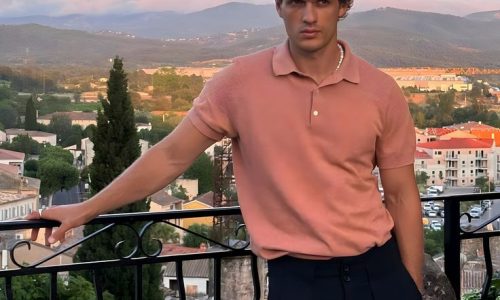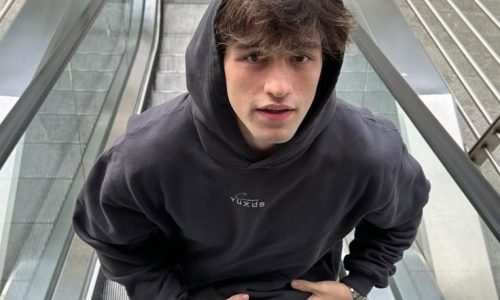
Style Radar: What’s Trending and What’s Coming Next
Introduction: Tracking the Pulse of Modern Fashion
Fashion is a mirror, constantly reflecting the world around it—and in 2025, the reflection is both stunning and complex. As global dynamics shift and technology continues to reshape our lives, the style world is evolving at breakneck speed. The traditional notion of seasonal collections has given way to a more fluid, ever-updating rhythm, one that merges global influences, digital integration, and deeply personal identity. This article explores what’s dominating style right now, and what’s poised to redefine the fashion landscape tomorrow.
More than ever, clothing choices are deliberate, signaling values and emotions as much as taste. Whether it’s the emergence of AI-assisted styling, the expansion of upcycled couture, or the cultural revival of traditional crafts, the momentum of fashion is moving toward deeper meaning, seamless innovation, and global collaboration. On this style radar, the next big thing is always just a heartbeat away.
The Rise of Mood-Responsive Fashion: Adaptive Clothing for Dynamic Lives
2025 is seeing a wave of clothing engineered to respond not just to physical needs but to emotional cues. With advances in smart textiles and wearable sensors, designers are creating garments that adjust color, shape, and insulation based on mood or biometric feedback. These aren’t just futuristic gimmicks—they’re practical enhancements for an always-on world.
Imagine a jacket that cools you down during stress, or a dress that shifts hue based on your heart rate. These garments blur the line between utility and art, merging science with style in ways previously only imagined in sci-fi. Consumers are embracing this tech-forward approach not for novelty, but for its ability to help them feel more connected to themselves and the spaces they move through.
The Minimalist Renaissance: Quiet Dressing for a Noisy World
While maximalism still has its place, a powerful undercurrent of minimalist revival is defining contemporary elegance. This isn’t the sterile minimalism of the past, but a softer, more intentional approach focused on subtle textures, neutral tones, and thoughtful layering. It speaks to a deeper desire for simplicity in an overstimulated age.
This modern minimalist trend strips away distraction without sacrificing individuality. The new minimalism favors elevated basics—cashmere tanks, wide-leg trousers, organic cotton button-downs—that exude confidence through restraint. It’s about thoughtful design, slow fashion, and rejecting chaos in favor of clarity.
The Next Wave of Streetwear: Hyperlocal Meets Hyperglobal
Streetwear continues to evolve, but the trend now leans into a hyperlocalized mindset fused with international flavor. Brands are borrowing not just from skate culture or hip hop anymore, but from specific neighborhoods, dialects, and rituals around the globe. It’s no longer just about logos—it’s about legacy.
In Tokyo, emerging designers are remixing traditional martial silhouettes with futuristic nylon blends. In Lagos, vibrant prints are becoming the canvas for political commentary. In Paris, underground brands are combining graffiti references with 18th-century tailoring techniques. Streetwear has matured, becoming a global conversation where every voice has room to speak.
Post-Pandemic Glamour: The Return of Celebration Dressing
After years of loungewear and comfort-first wardrobes, fashion is once again reaching for drama, sparkle, and spectacle. But this time, it’s not about elitist red carpet exclusivity—it’s a democratized form of glamour that invites everyone to dress up, just because they can.
This resurgence of celebratory style includes crystal-encrusted separates, metallic co-ords, feather-trimmed denim, and opera gloves paired with graphic tees. The return of glamour is rooted in optimism, self-expression, and a collective desire to be seen—not for approval, but for joy. The idea is not to dress to impress, but to dress to feel alive.
Techwear Goes Mainstream: Functionality as the New Fashion Standard
Once a niche aesthetic favored by urban survivalists and underground enthusiasts, techwear has moved into the mainstream spotlight. With climate unpredictability, hybrid working, and constant mobility, fashion is turning to gear that supports adaptability. Multi-pocket utility vests, waterproof trousers, breathable base layers, and packable coats are now daily staples.
What sets this wave of techwear apart is its fusion of high performance and refined aesthetics. Seamless construction, recycled materials, and architectural silhouettes allow these garments to move seamlessly from nature to city. Function is no longer a bonus—it’s expected, and designers are delivering pieces that perform under pressure without sacrificing polish.
Neo-Romanticism: Fashion’s Emotional Reconnection with Craft
Countering the mechanical polish of techwear is a growing movement rooted in emotional storytelling and craft. Neo-romanticism is bringing back the poetic spirit of fashion, emphasizing handmade details, flowing silhouettes, delicate embroidery, and raw-edge finishes. It’s less about perfection and more about humanity.
Designers are slowing down to reengage with textile traditions, often working with artisans to create one-of-a-kind pieces that carry history and heart. This trend celebrates imperfection—frayed hems, asymmetry, faded dyes—evoking a sense of nostalgia and permanence in an age of fast everything.
Accessories With a Narrative: Statement Pieces That Speak
Accessories in 2025 are no longer mere add-ons. They’re storytellers in their own right. Jewelry, bags, and footwear are now imbued with narratives, often crafted from salvaged materials or created through AI collaborations. Consumers are choosing pieces that resonate with their personal journey or social stance.
Expect to see earrings molded from ocean plastic, rings encoded with personal data, and shoes that integrate wellness technology. Statement accessories aren’t just visual—they’re emotional. They serve as mementos, conversations, and declarations of intent.
Inclusive Design at the Forefront: Beyond Size and Gender Norms
True inclusivity is not a side note in fashion anymore—it’s becoming the main framework. Designers are expanding offerings not just across a wider size range, but across the entire spectrum of physical ability, neurodiversity, age, and gender identity. Adaptive fashion is being woven into luxury labels, not isolated in niche categories.
Garments are being created with magnetic closures, flexible waistbands, and convertible silhouettes. Campaigns feature models of all shapes, skin tones, and lived experiences. The style radar for 2025 doesn’t just scan aesthetics—it’s tuned into ethics, representation, and empathy.
Conclusion: Style as a Forecast of Culture’s Future
As we track today’s most influential trends and tomorrow’s emerging currents, one message becomes clear—fashion is no longer just reactive. It is predictive, prophetic, and profoundly intertwined with the world’s trajectory. The garments we embrace today are already hinting at what we’ll value tomorrow: connection, clarity, adaptability, and authenticity.
Style in 2025 is not simply a reflection of taste—it’s an articulation of life philosophy. To stay ahead of the curve, one must not only watch the style radar but understand the signals it’s sending. What’s trending today is shaping the ethos of the next era—and fashion, as always, leads the way.



